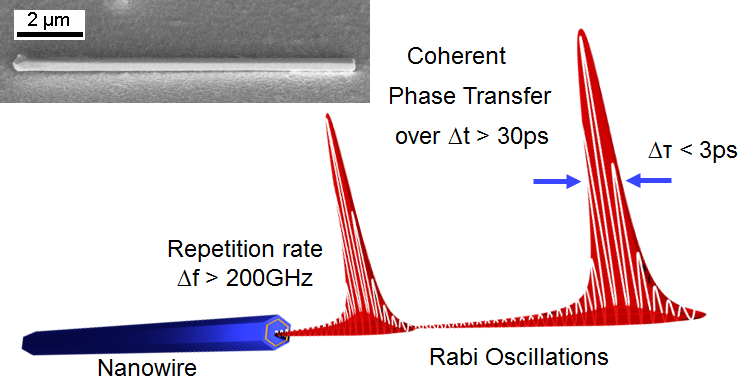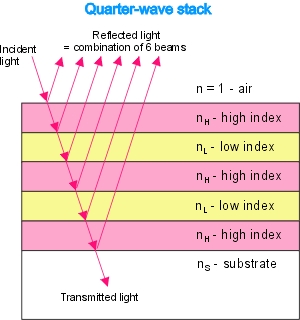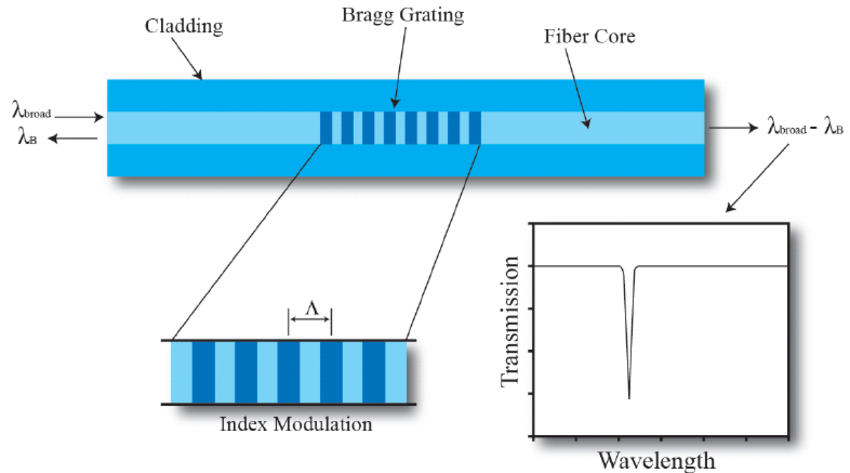Optical cavities form one of the crucial elements in the laser system design apart from the gain medium and other active and passive elements. For applications other than lasers, optical cavities can control optical modes available for emission from the cavity. This capability can be efficiently used in situations where a reduction in optical noise, or enhancement in emission is necessary. For these reasons, understanding the fundamentals of optical cavity design can be very useful in a number of applications.
In this article, we will discuss the key factors affecting optical cavities as well as a few key designs based on Fabry-Perot interferometers, Bragg reflectors, photonic crystals, and microring resonators.
General Design Considerations for Optical Cavities
Cavity modes arise because constructive interference occurs for only certain modes in the cavity. In a Fabry-Perot cavity, the interference occurs after a round trip. This is also the case in microring resonators, but the round trip is a circle in the latter case. In photonic crystals, interference occurs from waves scattered at periodic sites (a.k.a. nodes) in the crystal.
The cavity choice should be made based on the frequencies that need to be present or suppressed. For mode-locked lasers, for example, one needs to make sure there are a number of modes within the gain bandwidth. On the other hand, the number of modes can be increased by decreasing the size of a Fabry-Perot cavity.
Similarly, for reducing spontaneous emission which causes noise, the whole design can be housed in a surrounding photonic crystal. By making sure that the modes available in the photonic crystal are far away from the mode of operation, we can make sure spontaneous emission to nearby modes cannot occur.
Fabry-Perot Resonator Based Optical Cavity
Fabry-Perot cavities are very common in cavity design for lasers, especially in table-top systems. The reflectivity of the mirrors at the end of the Fabry-Perot cavity determines the amount of light going out of the cavity. Optical lenses and mirrors are used to build the table-top cavity. By making the reflectivity very high, a high lifetime for the photon in the cavity is achieved. This principle was used to detect gravitational waves in LIGO probes. Higher photon lifetimes in the Fabry-Perot cavity was used to increase the chance that the gravitational waves interact with the photon and detect the interaction.

Typical transmission spectrum out of a Fabry Perot cavity. Courtesy MathWorks
If Fabry-Perot cavities are used for mode-locking, smaller lengths are required for higher repetition rates, and higher gain bandwidths for smaller pulse durations. Typical surface emitting cavities for VCSELs can achieve repetition rates in the order of GHz because they are so small. For higher rates, smaller structures at nanoscale dimensions have been demonstrated to be effective. Here, the whole cavity is in the order of micrometers at most with the end facets acting as reflectors for the Fabry-Perot cavity. The image below shows such a structure achieved using semiconductor nanowires. Repetition rates higher than 200 GHz can be achieved.

Fabry-Perot nanowire cavities for high repetition rates. Courtesy PopFlock
Distributed Bragg Reflector (DBR)
Distributed Bragg reflectors (DBRs) are used along with Fabry-Perot designs as reflectors for the end facets. Since mirrors and optical reflectors cannot be reduced to microscale designs, Bragg reflectors are used to function as microscale reflectors. A Bragg reflector is a 1D photonic crystal which consists of alternating stacks of high and low refractive indices. The length of each stack is the same and is chosen to be one-fourth the center frequency of the desired bandwidth. For example, if 800 nm is the center frequency, 200 nm is chosen to be the length of each layer. Thus, increasing the number of layers increases the bandwidth around the center frequency.

Distributed reflection from a Bragg reflector. Courtesy batop
DBRs are very common in manufacturing of optical cavities for surface emitting diode lasers. Reflectivities higher than 99% are necessary in a VCSEL cavity design. Apart from diode lasers, DBRs have also been used for optical cavities in a fiber laser. DBR based optical cavity in an optical fiber is made by alternating between high and low refractive indices in the core of the fiber while manufacturing the fiber. Applications include cavities for Raman fiber lasers for broadband lasing with amplification achieved using many cascaded DBR based cavities in a single optical fiber.

Bragg reflector formed by changes in the reflective index in an optical fiber. Courtesy ResearchGate
Photonic Crystals
Photonic crystals come in three types: 1D, 2D and 3D crystals. DBRs are examples of 1D photonic crystals. 2D crystals can be used for controlling the propagation modes in waveguides. This is useful as modes can be controlled by varying the design while using the same material. 3D photonic crystals on the other hand are used to vary modes for spontaneous emission. By making certain modes absent in the cavity, spontaneous emission can be quenched as there are no energy levels for an emitter to release photons into. The opposite effect can also be achieved where spontaneous emission can be enhanced.
Microring Resonators
Microring cavities are similar to Fabry-Perot cavities in terms of cavity modes being set up by interference phenomena. Parameters of interest in Fabry-Perot design such as mode spacing and photon lifetime are also of interest here. However, no reflectors are required for microrings as the cavity is a loop. The cavity is designed by varying the circumference and thickness of the ring. Constructive interference occurs if the circumference is integral multiples of the wavelength.

Light circulating in a microring resonator. The waveguides are used to couple light in and out of the resonator. Courtesy ScienceDirect
Recent advances in optical integrated circuits has made microring cavities attractive for controlling the available modes in silicon waveguides. Simply by varying the radii of these rings, the modes in the cavity can be controlled. Rings with radii of 2 um in silicon have previously been fabricated with electron beam lithography. By connecting nearby elements to the microring resonator, the lifetimes of photons in the cavity can be modulated.
Summary
In summary, a clever optical cavities design is crucial for attaining the right spectral properties by selecting certain frequencies of choice while suppressing others. Properties such as the frequency and bandwidth at which the cavity resonates can be controlled by the cavity length and the refractive index of the materials used. Fabry-Perot and Bragg gratings are the most common type of optical cavities. with Bragg gratings usually being found in smaller devices such as laser diodes and optical fibers. In contrast to these traditional types of cavities, new optical cavities based on photonic crystals and ring resonators are striving to get better control over selecting frequencies. For example, instead of letting an array of frequencies through, which is common in a Fabry-Perot resonator, a photonic crystal can be designed to only let a specific band of frequencies through. These new cavities open the possibility for cavities that are smaller and target unexplored bands of frequencies.
Did you know, FindLight has a vast collection of products for designing optical cavities. Check out the catalog of optical reflectors, lenses, and fiber Bragg grating for lasers.
Today's post is sponsored by Connet Laser Technology - the leader in fiber lasers and optical fiber technologies.